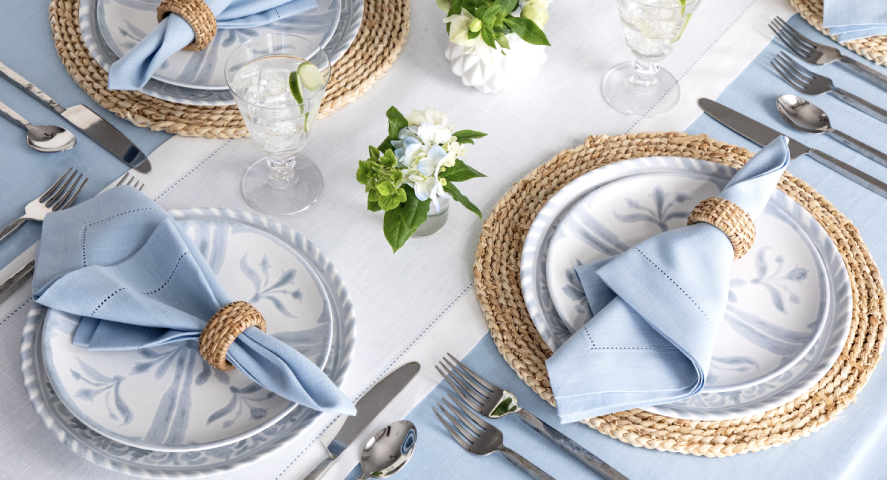A versatile material, linen is cooling when it’s hot and warm during cold weather – thanks to the fact it is porous i.e. breathable. This makes linen very easy to wear.
At the same time, linen is simple to care for and a natural material as well as being biodegradable and sustainable. It really does have a lot going for it when it comes to comfort and ticking the right environmental boxes.
It has also been around for what feels like forever. After all, the Ancient Egyptians used it to wrap the bodies of their dead, creating what we know today as ‘mummies.’
@ethicalmadeeasy: “It may come as a surprise but linen use actually dates back 36,000 years! A cave in Georgia was discovered to contain dyed flax fibers, which is proof that people utilised wild flax fibers to create fabrics similar to modern-day linen.”
Today you will find linen used in tablecloths, bed linen, curtains and rugs. It’s even in dollar bills.
Going right back to the beginning
Linen is made from flax fibers, taken from the flax plant. You will find this plant in most countries in the world but Belgium and the Netherlands, in particular, are some of the best producers of quality linen thanks to ideal temperatures in which to grow the flax plant.
To access the flax fibers, the flax plants are pulled out of the ground by hand (a process called ripping which creates a finer linen) or they are cut. This is followed by retting (removing the plant stock from the fibers). This can be done by hand but is often achieved by crushing the stalks between two metal rollers to remove the woody portion. This is called scrutching. The fibres are then heckled (combed out) to find lengthy pieces of up to 20 centimeters. Once gathered these are then spun into yarn and later woven into fabric.
Some people say linen is a coarse fabric, but this really just depends on how the fibers have been woven.
Linen’s environmental benefits
The process of producing linen means nothing is wasted because the stalks that are discarded are used for linseed oil. Linen itself is biodegradable and it can be grown without chemicals such as pesticides.
Linen versus cotton
Both cotton and linen are natural materials and popular for wearing all year round. Linen is more expensive than cotton to buy but where linen really wins out is in the fact it is up to three times stronger than its cotton equivalent. It also takes less time to dry.
Linen is easy to dye
Fed up with your white, cream or natural tan linen sheets and want to introduce some bold reds or purples into your home but don’t want to buy new bed sheets, towels etc.? Then simply dye your linen items. The natural fibers in the fabric means they hold colored dyes well. Linen is also anti-bacterial and which is why it’s such a good fabric for bed sheets and pillows.



















